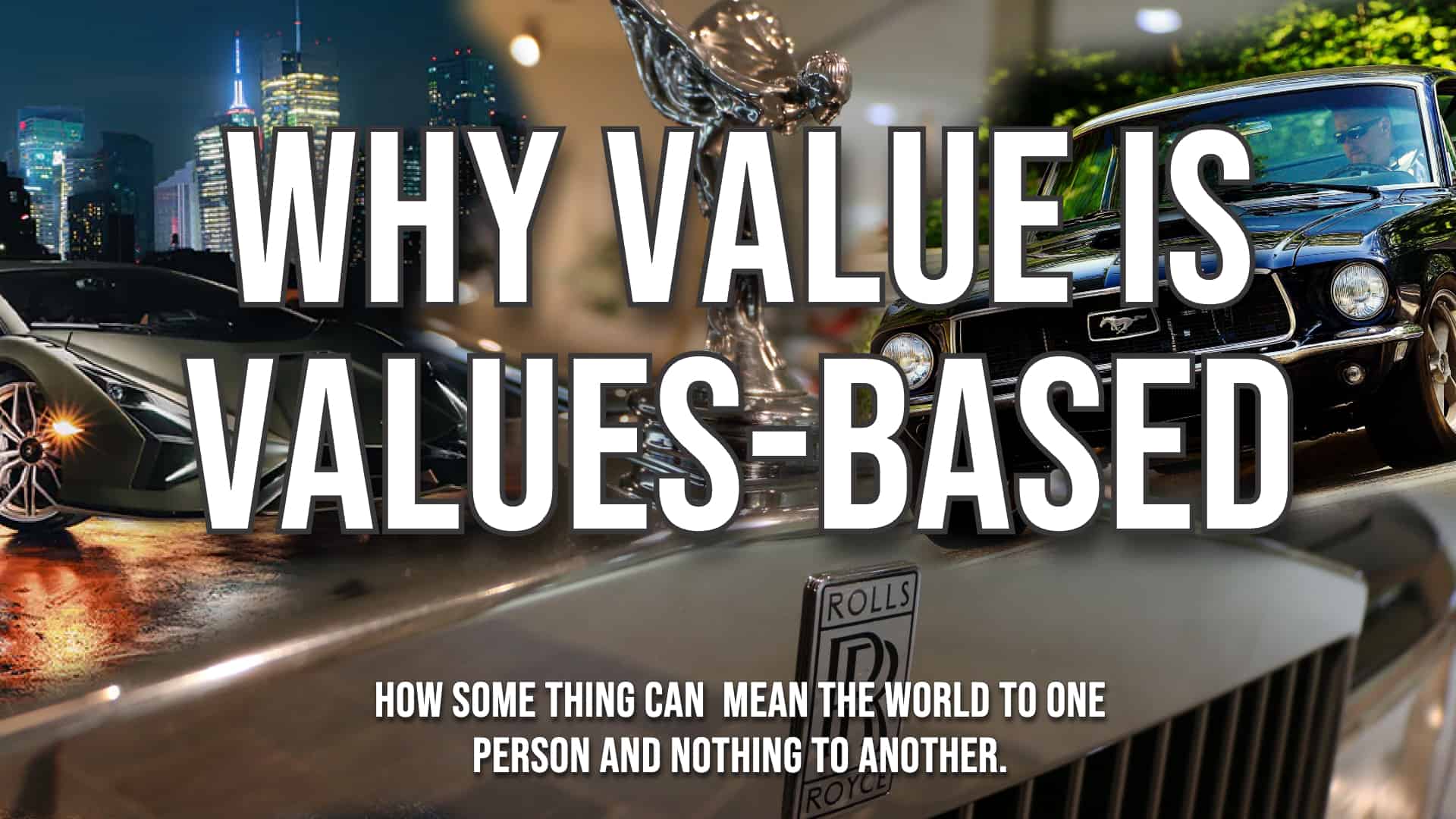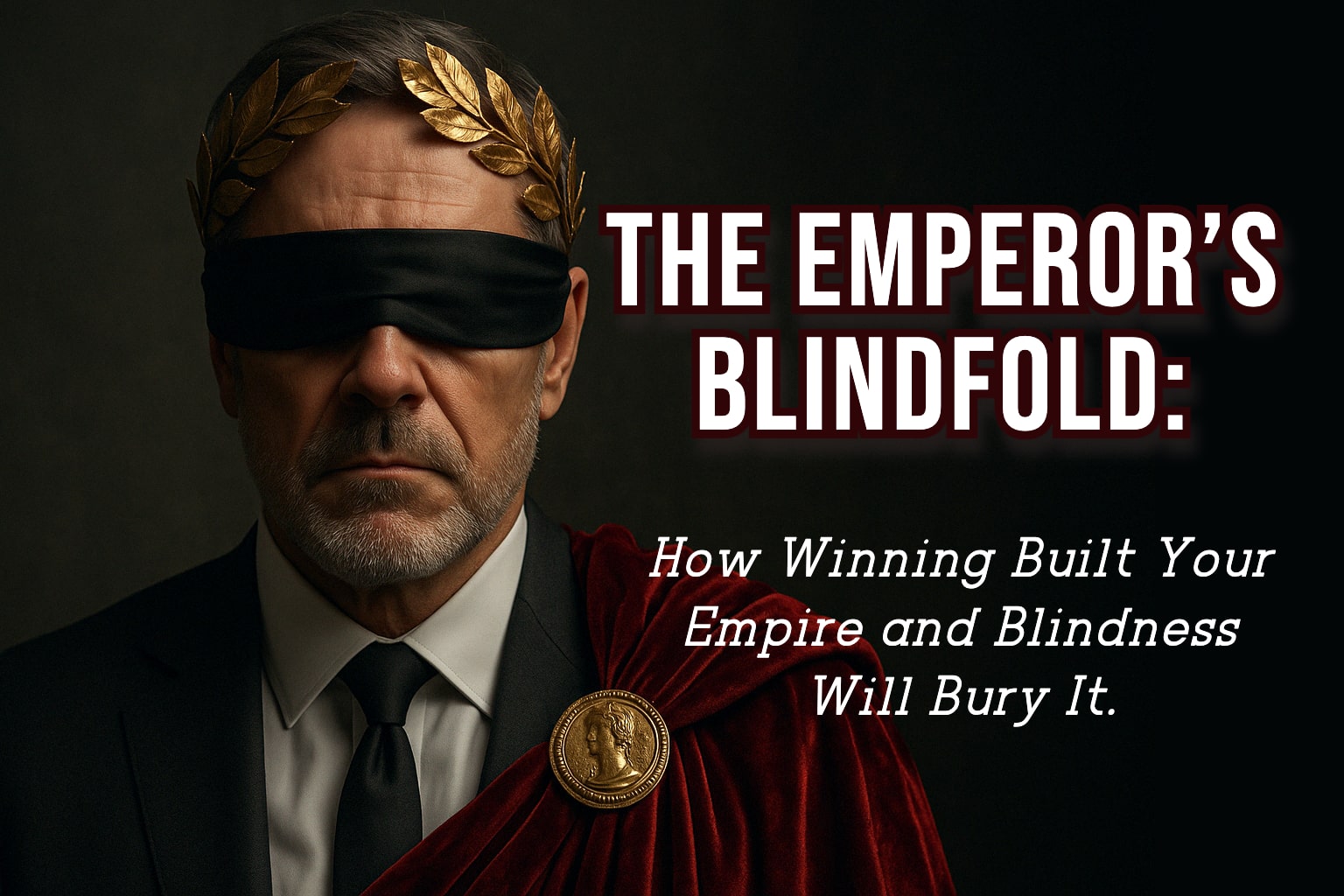What’s the best money you ever spent?
Take a moment to think about your answer, and I’ll bet that you could lecture me on why it was your best purchase.
The Subjectivity of Value
Imagine walking through a flea market. What catches your eye? An antique vase, a vintage comic book, or nothing at all? That’s the thing about value – it’s incredibly subjective. What you find valuable might not even register for someone else. But why is that?
Let’s explore.
Have you ever wondered why some things mean the world to one person but seem trivial to another? It’s all about value, not just any value – it’s about what we individually value.
This article dives into the fourth level of the Emotional Source Code, “Values and Beliefs.” we will examine how our personal value systems shape our perception of worth and how we only appreciate something’s value once it resonates with our beliefs and priorities.
Personal Values and Their Influence
Our personal values, those core beliefs and principles we hold dear, play a massive role in determining what we “value” in the external world. These values can stem from our upbringing, life experiences, or aspirations. Values are like the lenses through which we view and assess everything around us.
Cultural and Societal Influences
But it’s not just a personal thing. Our cultural background and our society also mold our value systems. For instance, collectivist societies value community and harmony more than individualist societies, where independence and self-reliance are prized.
The Journey to Appreciating Value
Curious about how we come to appreciate the value of things? It’s a journey influenced by various factors.
The Role of Experience in Shaping Value
Our experiences are, in many ways, the building blocks of our value system. Each experience, good or bad, adds a layer to our understanding of what’s important to us.
Have you ever noticed how the things that mattered immensely to you in your twenties are likely different than what matters most in your 40s, 50s, and 60s? Your preferences have changed over the years. That’s experience at work.
Learning from Past Choices
Remember that time you chose something and later regretted it? Or the opposite – when you passed on something and later realized its worth? These instances are crucial in shaping our appreciation of value.
How New Experiences Reshape Our Values
You’ve likely noticed that life has a habit of throwing us curveballs, and each new experience allows us to reaccess the values we hold dear. Every experience offers us a moment to tweak our value system. Traveling to new places, meeting diverse people, or facing unexpected challenges – all contribute to a more nuanced understanding of value.
Awareness and Recognition of Personal Values
It’s one thing to have values; it’s another to be aware of them. Self-reflection is critical here. One of the five layers through which we the matrix of our lives is that of “Meaning.” What “meaning” am I giving this situation? It is a question going on at an unconscious level in all our lives, all the time. Taking time to introspect and understand what truly matters to us (subjectively) can shed light on why we value what we value.
The Impact of External Opinions
Even the most anti-social person you know is, at their core, a social creature. As a result, the opinions of others, especially those we respect, can influence our value systems. Have you ever bought something based on the recommendation of someone you admire? That’s the external influence in action. If you are a Kim Kardashian fan, think about the things you have bought or desire to buy because she recommends them. Kim Kardashian is, of course, just a single example of millions.
The Interplay of Value and Decision-Making
Our values don’t just influence what we like; they guide our decisions, big and small.
Value-Based Decision Making
Every day, we make choices, from what to eat to who to spend our lives with. Whether consciously aware of it or not, these decisions reflect our values.
Everyday Choices and Inherent Values
Consider your daily choices – your preferred coffee shop, your go-to news source, even your fashion style. These seemingly small decisions are markers of your underlying values.
Long-Term Decisions and Core Values
Our core values take center stage regarding more significant life decisions, like career paths or life partners. These values are deeply embedded and often shaped by our most significant life experiences.
However, they are not necessarily our own…More on that in a moment.
Challenges in Aligning Values and Choices
Sometimes, what we think or have been told we value and what we intrinsically value can be at odds. It’s a common dilemma, and navigating it between imposed (manipulated) values and intrinsic (innately our own) values requires honesty and introspection. Because we tend to cling to the familiar, sometimes it takes a life-changing moment.
A Pandemic of Values
Having survived a pandemic permanently changed people in both subtle and dramatic ways. As a result, we have faced “The Great Resignation,” “Quiet Quitting,” a declining workforce, and a mental health and loneliness epidemic, where even though people are free to move around, many are staying isolated.
During the pandemic, people found themselves questioning their perceived values. Many asked themselves, “Why am I working so much? Why am I pursuing “X” or “Y”? Why am I living in a city and pursuing a lifestyle I don’t care about?”
For many, the pandemic was a moment in time where they got to step off the wheel and question what they had been telling themselves mattered: what they said had value versus what they actually (intrinsically) valued.
Conflicts Between Personal and Perceived Values
Have you ever felt torn between what you believe and what you think you’re supposed to believe? That’s the conflict between intrinsic and extrinsic (imposed or perceived values). It’s a tough spot, but overcoming it is vital to understanding and appreciating true value.
Navigating Value Dilemmas
Life is full of tough choices; sometimes, our extrinsic and intrinsic values can pull us in different directions. Balancing these conflicting values is a skill, one that’s honed over time and with experience.
Real-Life Applications and Examples
Let’s put theory into practice and see how value perception plays out in the real world.
Case Studies: Value Perception in Action
Examples of value perception are everywhere, from businesses understanding their customers’ values to individuals aligning their lifestyles with their beliefs. Let’s explore a few.
Business and Consumer Behavior
Companies spend much of their time and resources figuring out what their customers value. This understanding of value is one of the primary reasons large corporations love AI; it can instantly give that information versus tracking a five-year buying cycle. Why does that matter? Because understanding customer values is critical to offering products and services that resonate with them.
Conclusion: Embracing Our Unique Value Systems
And that’s a wrap! Remember, appreciating the value in things and people is a journey, one that’s deeply personal and constantly evolving. By understanding and embracing our unique value systems, we make more meaningful choices and learn to appreciate the diverse values in the world around us.
Three Practical integration and implementation strategies:
- Unearth Your True Values: Embark on a self-discovery quest with just a pen and paper. List down your claimed values and the reasons behind them. But here’s the twist – challenge yourself. Question each value: Is it genuinely yours or a product of societal conditioning? Dive deep into your inner beliefs and unearth the truth of your own values.
- Reflect on Evolving Priorities: Journey back to your younger self and identify what you once held dear. Now, investigate the transformation – what shifted on this path from then to now? Was it a personal evolution or external influences that reshaped these values? This introspection offers a window into your personal growth and changing perspectives.
- Future Self-Consultation: Picture yourself twenty years from now. From that vantage point, look back to today. Ask your future self: What am I chasing now that will be insignificant in two decades? This thought experiment propels you to evaluate the long-term significance of your current pursuits, guiding you toward what truly matters.
By implementing these strategies proactively, you can promote a culture of living and breathing your team’s values. This approach will enhance team cohesion and elevate your leadership to a more empathetic and practical level.
Tell us, how do you align your leadership with your team’s values? I’d love to hear your strategies and experiences in the comments below.




